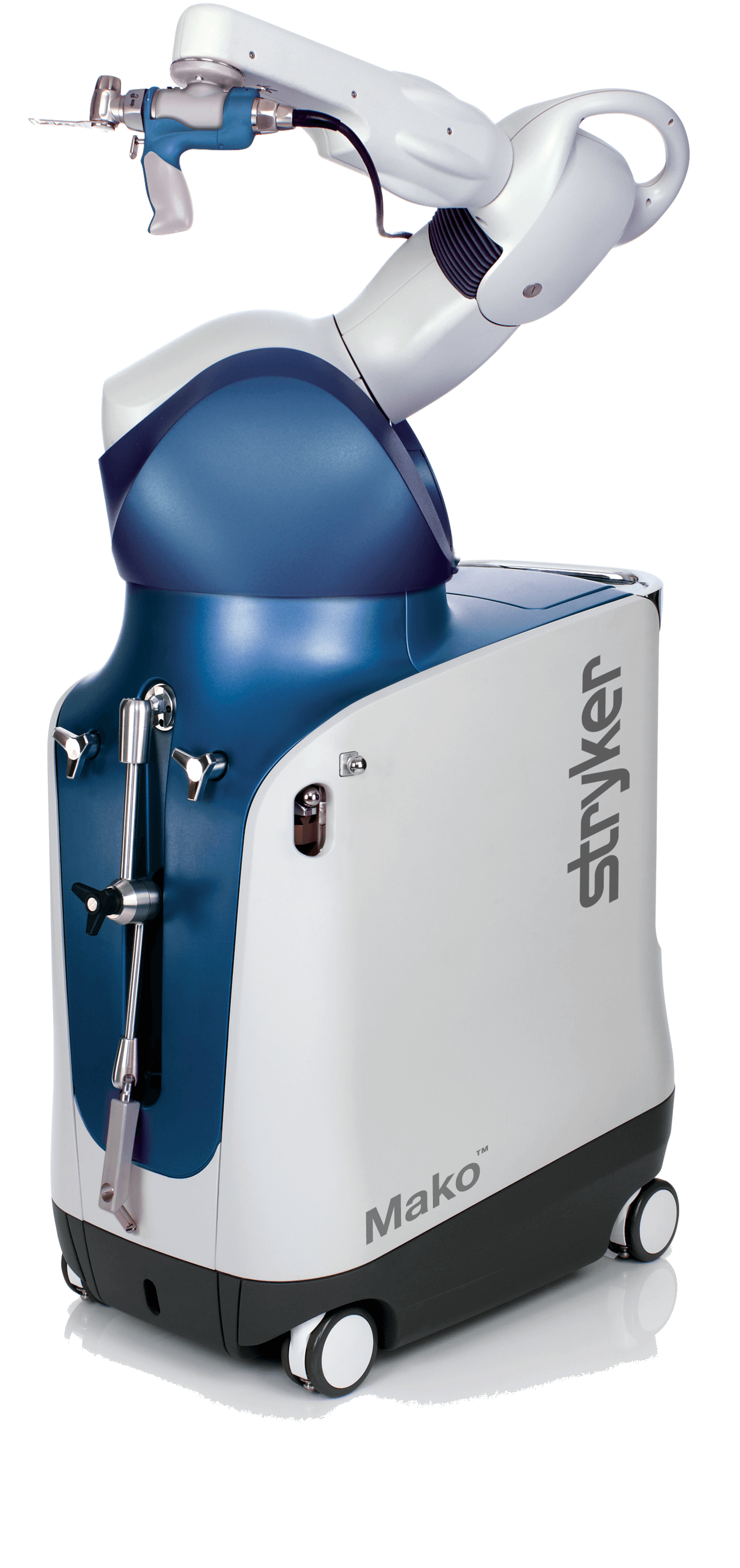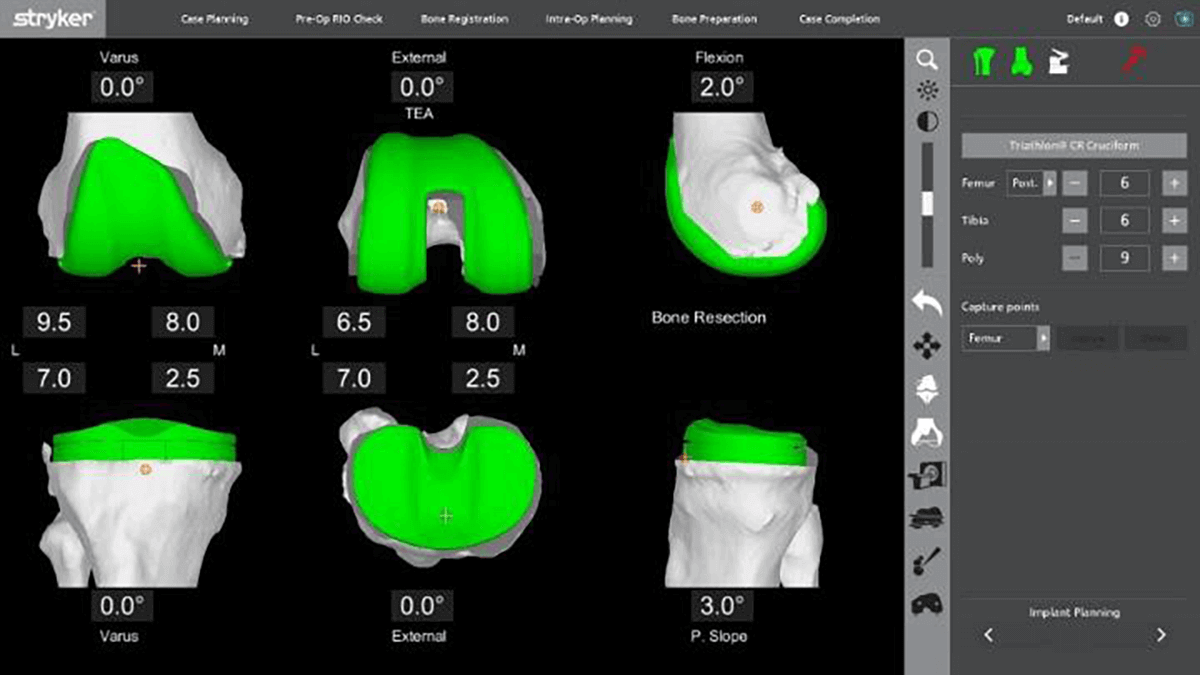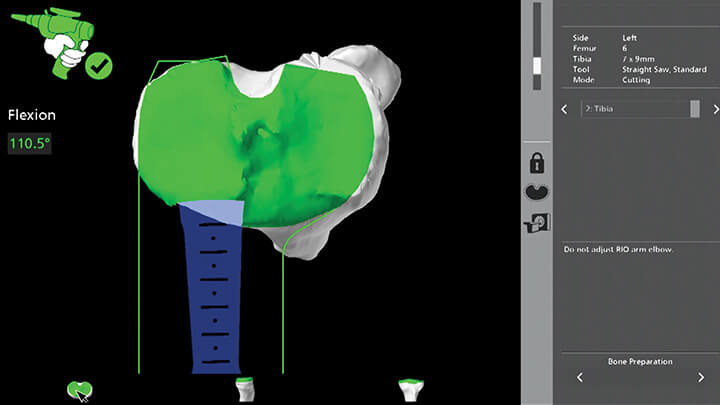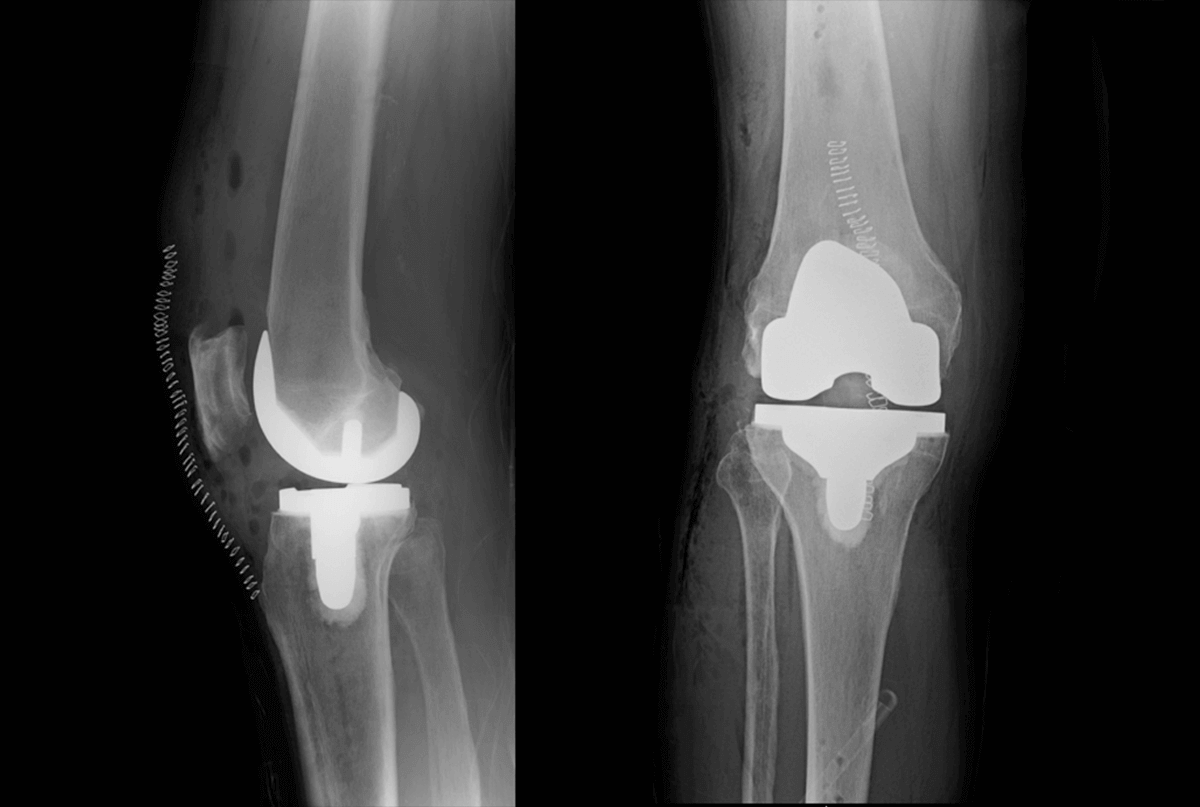Over the years, knee replacement techniques and instrumentation have undergone countless improvements. Mako Robotic-Arm Assisted Surgery System is an example of how technology is transforming the way joint replacement surgeries are being performed.
When you hear ‘robotic-arm assisted technology,’ it’s important to understand that the Mako Robotic-Arm doesn’t actually perform the surgery. Surgery is performed by an orthopaedic surgeon, who uses the Mako System software to pre-plan the surgery. The orthopaedic surgeon guides the Mako robotic-arm to remove diseased bone and cartilage. Then the surgeon inserts the knee implant.
Mako Technology was designed to help surgeons in their efforts of providing personalized surgical experience, with each surgical plan being based on a patient's specific diagnosis and anatomy.

Personalized plan
It all begins with a CT scan of the patient’s knee joint that is used to generate a 3D virtual model of patient’s unique anatomy. This virtual model is loaded into the Mako system software and is used to create the patient’s personalized preoperative plan.

In the Operating Room
In the operating room, the surgeon uses Mako system to assist in performing the surgery based on the patient’s personalized preoperative plan. The Mako system also allows the surgeon to make adjustments to the patient’s plan during surgery as needed. When the surgeon prepares the bone for the implant, the Mako system guides the surgeon within the pre-defined area and helps prevent the surgeon from moving outside the planned boundaries. This helps provide more accurate placement and alignment of the implant to plan, as shown in a cadaveric model.1

After Surgery
After surgery, the surgeon, nurses and physical therapists set goals with the patient to get the patient back on the move. They closely monitor the patient’s condition and progress. The surgeon may review an x-ray of the new knee with the patient.

FREQUENTLY ASKED QUESTIONS
Q: How long has the Mako procedure been available?
A: The first Mako Partial Knee procedure was performed in June of 2006 and the first Mako Total knee procedure was performed in June of 2016.
Q: Does the Mako Robotic-Arm actually perform the surgery?
A: No, surgery is performed by an orthopedic surgeon, who uses the surgeon-controlled robotic-arm system to pre-plan the surgery and to position the implant. The robotic arm does not perform the surgery nor can it make decisions on its own or move in any way without the surgeon guiding it. The Mako System also allows the surgeon to make adjustments to the patient’s plan during surgery as needed.
Q: How long do knee implants last?
Individual results vary and not all patients will have the same postoperative activity level. The lifetime of a knee replacement is not infinite and varies with each individual.
IMPORTANT INFORMATION
Disclaimer
Hip joint replacement is intended for use in individuals with joint disease resulting from degenerative and rheumatoid arthritis, avascular necrosis, fracture of the neck of the femur or functional deformity of the hip.
Knee joint replacement is intended for use in individuals with joint disease resulting from degenerative, rheumatoid and post-traumatic arthritis, and for moderate deformity of the knee. Joint replacement surgery is not appropriate for patients with certain types of infections, any mental or neuromuscular disorder which would create an unacceptable risk of prosthesis instability, prosthesis fixation failure or complications in postoperative care, compromised bone stock, skeletal immaturity, severe instability of the joint, or excessive body weight.
Like any surgery, joint replacement surgery has serious risks which include, but are not limited to, pain, bone fracture, change in the treated leg length (hip), joint stiffness, hip joint fusion, amputation, peripheral neuropathies (nerve damage), circulatory compromise (including deep vein thrombosis (blood clots in the legs)), genitourinary disorders (including kidney failure), gastrointestinal disorders (including paralytic ileus (loss of intestinal digestive movement)), vascular disorders (including thrombus (blood clots), blood loss, or changes in blood pressure or heart rhythm), bronchopulmonary disorders (including emboli, stroke or pneumonia), heart attack, and death.
Implant related risks which may lead to a revision of the implant include dislocation, loosening, fracture, nerve damage, heterotopic bone formation (abnormal bone growth in tissue), wear of the implant, metal sensitivity, soft tissue imbalance, osteolysis (localized progressive bone loss), audible sounds during motion, and reaction to particle debris.
The information presented is for educational purposes only. Speak to your doctor to which therapy is appropriate for you. Individual results vary and not all patients will return to the same activity level. The lifetime of any joint replacement is limited and depends on several factors like patient weight and activity level. Your doctor will counsel you about strategies to potentially prolong the lifetime of the device, including avoiding high-impact activities, such as running, as well as maintaining a healthy weight. It is important to closely follow your physician’s instructions regarding post-surgery activity, treatment and follow-up care.
Speak to your doctor to decide which therapy/treatment is appropriate for you.
Stryker Corporation or its other divisions or other corporate affiliated entities own, use or have applied for the following trademarks or service marks: Mako, Stryker, Together with our customers, we are driven to make healthcare better. All other trademarks are trademarks of their respective owners or holders.
GSNPS-PE-85_17642
REFERENCES
1. Hampp EL, Chughtai M, Scholl LY, Sodhi N, Bhowmik-Stoker M, Jacofsky DJ, Mont MA. Robotic-Arm Assisted Total Knee Arthroplasty Demonstrated Greater Accuracy and Precision to Plan Compared with Manual Techniques. J Knee Surg. 2018 May 1.